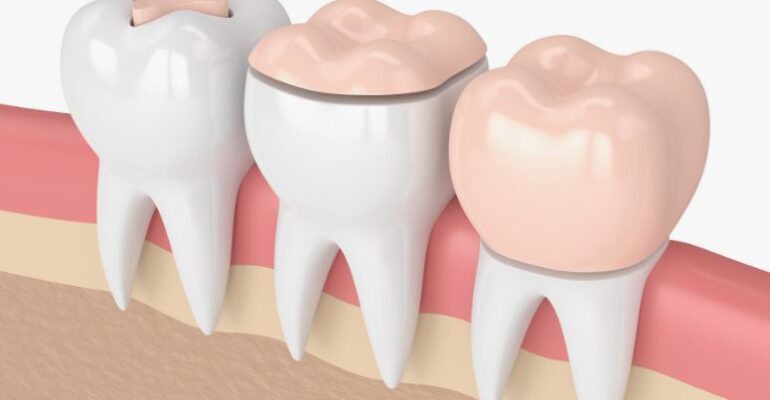Comparing Dental Fillings Vs Sealants To See Which Is Better

Comparing Dental Fillings Vs Sealants To See Which Is Better
When it comes to treating cavities in your teeth, you want to ensure you’re making the best decision for your oral health. Two common treatments—dental fillings vs sealants —often come up in conversation. But which one is the right choice? This article provides a comprehensive overview to help you make an informed decision.
Dental Fillings Vs Sealants Defined
In oral health, dental sealants and fillings are two common treatments that protect teeth from decay and maintain a healthy, bright smile. While they may sound similar, they serve different functions and are used in different situations.
What is a Dental Sealant?
A dental sealant is like a superhero’s shield for your molars, the back teeth that do most of the chewing. It’s a thin, protective layer painted onto these teeth. The sealant quickly bonds into the depressions and grooves of the teeth, forming a protective shield over the enamel. Every time you eat, tiny food particles can get stuck in these grooves, attracting bacteria and leading to cavities. But with a sealant acting as a barrier, this can be prevented. Sealants are particularly useful for people at higher risk of developing tooth decay.
What is a Dental Filling?
A dental filling is a type of restorative treatment used to repair minimal tooth fractures, tooth decay, or other damaged surfaces on the teeth. When a tooth is damaged by decay, the dentist removes the decayed portion and then “fills” the area with a filling material. Fillings are also used to repair cracked or broken teeth and those worn down from misuse, such as nail-biting or tooth-grinding.
Types of Dental Sealants
Resin-Based Sealants
Resin-based sealants are the most common type used today. Made from a plastic material, they are painted onto the tooth and hardened with a special light, creating a durable, clear, or white layer that seals off grooves and depressions. They are highly effective but require a completely dry environment during application.
Glass Ionomer Sealants
Glass ionomer sealants are made from a mixture of acrylic and glass material. They release fluoride over time, providing additional protection against tooth decay. They bond well with the tooth surface and don’t require a dry environment for application but are less durable than resin-based sealants.
Polyacid-Modified Resins
Polyacid-modified resins, or compomers, combine the durability of resin-based sealants with the fluoride-releasing properties of glass ionomer sealants. They offer excellent adhesion and resistance to moisture, making them a practical choice for many patients.
Types of Dental Fillings
Amalgam Fillings
Amalgam fillings, or “silver fillings,” have been used for over a century. Made from a mixture of metals, they are durable and good for large fillings and back teeth. However, they are more noticeable than tooth-colored fillings.
Composite Fillings
Composite fillings are made from a resin composed of plastic and fine glass particles. They are color-matched to your teeth, making them popular for visible areas. Composite fillings bond directly to the tooth, providing further support but may not be as durable as other types.
Ceramic Fillings
Ceramic fillings, made from porcelain, are aesthetically pleasing and resistant to staining and abrasion. However, they can be brittle and may not be suitable for molars.
Pros and Cons of Sealants and Fillings
Below are pros and cons of dental fillings vs sealants which will give you more insight into which one to choose:
Benefits of Dental Sealants
- Effective Prevention Against Decay: Sealants prevent food particles and bacteria from settling in the crevices of teeth, reducing the risk of cavities.
- Easy and Painless Application: The process is quick, non-invasive, and painless.
- Long-lasting Protection: Sealants can last up to 10 years with proper care.
Disadvantages of Sealants
- Not Suitable for All Teeth: Sealants are only applied to the chewing surfaces of back teeth.
- Potential for Sealant Breakdown: Sealants can chip or wear away over time.
- False Sense of Security: Sealants are not a substitute for good oral hygiene.
Benefits of Dental Fillings
- Restores Tooth Function and Structure: Fillings restore decayed teeth to their normal function and shape.
- Prevents Further Decay: Fillings help prevent further decay by closing off spaces where bacteria can enter.
- Cosmetic Improvement: Fillings can be made to match the color of your natural teeth.
Disadvantages of Fillings
- Durability Concerns: Some fillings, like composites, may not be as durable as others.
- Not Preventive: Fillings do not prevent further decay and require good oral hygiene.
How to Choose Between Dental Fillings Vs Sealants
Choosing dental fillings vs sealants depends on various factors such as how far the decay has progressed, your age, and your risk for future decay. If you have deep pits and fissures but no signs of decay, sealants might be the best preventive measure. However, if decay has already set in, a filling will be necessary to restore the tooth and prevent further damage.
Secure Your Healthy Smile Today
At Ramlaoui Clinic, we understand the importance of early dental care to ensure a lifetime of healthy smiles. Whether it’s the application of sealants for cavity prevention or dental fillings to treat existing decay, our team is committed to providing the highest quality of care in a welcoming and friendly environment. We believe in educating our patients about the benefits and drawbacks of dental fillings vs sealants, helping them make informed decisions about their oral health.
Ready to take the next step in your oral health journey? Schedule an appointment with our expert team at Ramlaoui Clinic today. Let’s work together to create a foundation for a lifetime of healthy, happy smiles!
14-06-2024

